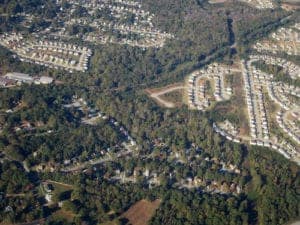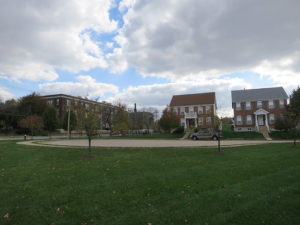Most real estate professionals will tell you the most important thing in a house purchase is location. Still, some people moving into a neighborhood don’t consider location in choosing a lot. They may only note where the neighborhood is located and think that all lots are the same within the subdivision.
But selecting a lot is incredibly important for the home you’re building. It can even make your home easier to sell in the future. So how do you find the perfect lot?
Debate Direction
When considering a lot, decide which direction your home will face. Southern exposure provides more sun, though not direct. Western exposure means you’ll receive direct afternoon sun, while an eastern exposure guarantees morning sun.
Visit the lot several times at different times of the day. Notice the sun and the shadows. Keep in mind the direction of your home can affect your heating and cooling bills as well as whether you will be enjoying sun or shade in your backyard in the afternoon.
Figure on the Future
 Do you love the natural area in the back of the lot of your choosing? Find out if it will stay that way. Has it been designated as a green space that will never be developed or does it belong to a developer and will be part of future development? If it’s farmland, keep in mind that it could be sold and developed in the future. Don’t assume natural areas will remain that way — ask.
Do you love the natural area in the back of the lot of your choosing? Find out if it will stay that way. Has it been designated as a green space that will never be developed or does it belong to a developer and will be part of future development? If it’s farmland, keep in mind that it could be sold and developed in the future. Don’t assume natural areas will remain that way — ask.
Examine Easements
When you find a lot you love, make sure you understand easements and other access points. You can get this information at the county Register of Deeds or the Porter County Recorder’s Office here in Indiana. Many developers set up easements, retaining walls, common areas, and access paths for possible future development. For instance, even if your current development is finished, if the area behind yours is sold and developed and you have an easement or access point on your lot, it could be possible for a developer to build a road or driveway through your property. Know all parts of the lot before you build on it.
Consider Cul-de-sacs

Image via Flickr by pasa47.
A lot of potential homeowners love cul-de-sacs because there’s less through traffic and the circle provides a safe place for children to play and ride bikes. Some people will tell you theft is less likely if your home is on a cul-de-sac because the thief can’t get away quickly.
But if your home sits at the head of the cul-de-sac, some people may not want to purchase the place. Snowplows tend to pile snow there, and some buyers don’t like to be at a dead end. Homes on cul-de-sacs generally come with a pie-shaped lot, smaller in front and larger in back. This could be a problem for the housing style you choose.
If you’re considering a house lot on a cul-de-sac, decide what is more important: family space and outdoor activities with neighbors or a larger front yard. Speaking of types of lots …
Contemplate the Corner Lot
Corner lots are generally larger out front and may be perfect for a side-loading garage style home. But they sometimes have small backyards. If there are sidewalks in the area where you intend to live, know that you will have more sidewalk to maintain in the winter, if you’re responsible for snow removal. Corner lots can be a bonus when trying to sell as they are ideal for showcasing a home and help the property stand out.
Navigate the Neighborhood
Most people look at their home site and the surrounding homes on the same street. Make sure you drive the neighborhood several times during different parts of the day. Take a look at the street behind and in front of your proposed lot.
Select Size: Slopes, Drainage, and Useable Area
When you look at lots, you may be won over by the largest. But before signing on the line, take a closer look at slopes, drainage, and useable areas of the lot. If a lot is much larger than others in the neighborhood, it may be because of some of these things. You may have a sharp slope or drainage that renders parts of the property useless from a building perspective.
Don’t assume a large lot means more options. Dig deeper to find out which home styles are suitable on the lot and how much of the property is usable.
Select Street Slope
Not only is there slope on your lot to consider, but slope of the lots surrounding yours is important, too. Also, the slope of the street can cause issues. If your lot is lower than those around you or at the bottom of a hill on your street, a hard rain could bring a lot of runoff. Ideally, that won’t be the case but it’s something to consider.
Be Aware of Boxes
The electrical, sewer, and fire hydrants need to go somewhere, and you likely don’t want them in your yard. Find out if the developer already knows where they will be. If you don’t, you’ll be doing what thousands of homeowners do, finding a very large bush or rock to hide them behind.
Choose a Choice Neighborhood
When selecting a lot in the neighborhood, consider whether you’d rather be one of the first to move in and get your choice of spots or come in at the end. Your choice may be limited at the end, but there will be less construction to deal with.
Keep in mind when choosing a lot that it is about more than just what you prefer. Even if you have no intention of selling your home in the future, it is a good idea to keep a future buyer in mind. Consider what the average homeowner would like and begin your search from there, narrowing down the choices to find something you love. A good place to start is in one of the many Steiner Homes subdivisions. Check them out today and contact us with questions.
